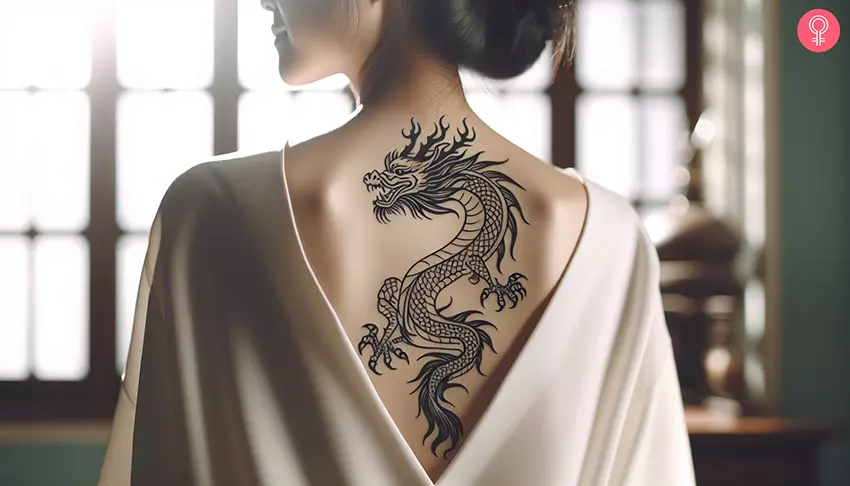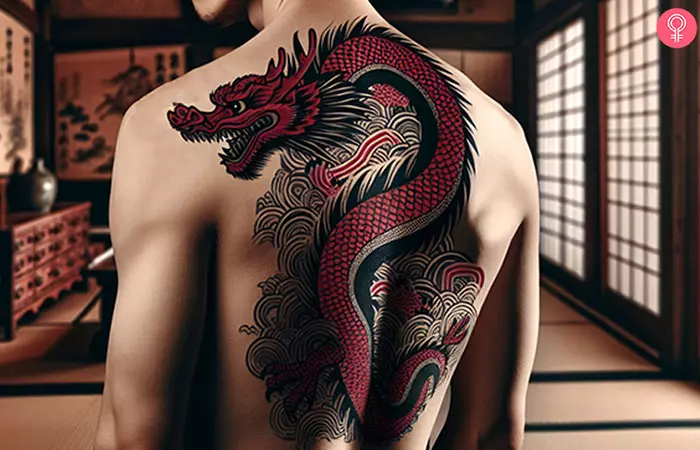Dragon Tattoo – Meaning, History, and Cultural Impact
Introduction :
In the world of body art, few designs command as much attention, intrigue, and respect as the dragon tattoo. These mythical creatures have captured the human imagination for centuries, appearing in legends, folklore, and spiritual traditions across nearly every major culture. Dragon tattoos are not merely ornamental—they are rich in symbolism and steeped in cultural history.
From East Asian dragons representing wisdom and strength to European dragons symbolizing power and mystery, dragon tattoos can carry deeply personal meanings. In this detailed guide, we explore the origins, meanings, styles, and cultural significance of dragon tattoos, helping you understand why they remain one of the most enduring and powerful symbols in the world of tattoo art.
________________________________________
1. History of Dragon Symbolism
1.1. Origins in Eastern Mythology
The dragon in Chinese mythology is a revered creature. Unlike the fire-breathing beasts of Western legends, Chinese dragons are benevolent and wise, often seen as harbingers of good luck, rain, fertility, and power. Ancient Chinese emperors believed themselves to be descendants of dragons, using the symbol to justify their divine right to rule.
Japanese dragons share similar traits with Chinese dragons but often include elements of sea serpents, reflecting Japan's maritime culture. These dragons are associated with water, rainfall, and the ocean. In both cultures, dragons are seen as guardians and protectors.
1.2. Western Dragons and Medieval Legends
In contrast, European dragons are typically depicted as dangerous and malevolent, often hoarding treasure or threatening kingdoms. Knights and heroes, such as St. George, were celebrated for slaying dragons, which symbolized chaos or evil. These stories painted dragons as obstacles to overcome, emphasizing courage and heroism.
________________________________________
2. What Does a Dragon Tattoo Symbolize?
A dragon tattoo can carry multiple meanings depending on the culture, design, and personal beliefs of the wearer. Here are some common interpretations:
• Strength and Power – Dragons are often associated with unmatched power and authority.
• Wisdom and Knowledge – Eastern dragons embody intelligence and spiritual enlightenment.
• Protection – Many people see dragon tattoos as protective symbols against evil or misfortune.
• Mystery and Magic – The mythical nature of dragons adds a touch of the supernatural.
• Balance – Especially in Asian culture, dragons represent the balance of opposing forces (Yin and Yang).
For many, the dragon tattoo is more than just art—it's a statement of identity, inner strength, and a deep connection to myth and legend.
________________________________________
3. Popular Dragon Tattoo Styles and Their Meaning
3.1. Chinese Dragon Tattoos
These dragons are long, snake-like creatures with flowing whiskers and no wings. They are typically depicted as peaceful and spiritual beings. A Chinese dragon tattoo often symbolizes prosperity, wisdom, and nobility.
3.2. Japanese Dragon Tattoos
Japanese dragons are more stylized, often accompanied by waves, clouds, or cherry blossoms. These tattoos represent courage, balance, and supernatural power. They may also reflect devotion to family or clan, making them a popular choice among those honoring heritage.
3.3. Celtic Dragon Tattoos
Celtic dragons are commonly shown eating their own tails—a symbol of eternity and the cyclical nature of life. With intricate knotwork designs, these tattoos reflect protection, guardianship, and ancient spiritual energy.
3.4. Tribal Dragon Tattoos
Simple yet powerful, tribal designs focus on bold black lines and patterns. A tribal dragon tattoo often emphasizes strength, masculinity, and primal energy.
3.5. Realistic or Western Dragon Tattoos
Western dragon tattoos usually include wings, claws, and fire-breathing features. These symbolize dominance, chaos, and conquest. For some, these dragons represent a rebellious spirit or the ability to face danger head-on.
________________________________________
4. Dragon Tattoo Placement Ideas
Choosing where to place your dragon tattoo is just as important as the design. Here are some common placements and what they may signify:
• Back: Ideal for large, detailed designs. Represents strength and stability.
• Arm or Sleeve: Offers visibility and a dynamic canvas. Popular for men and women.
• Leg or Thigh: Bold and less visible, ideal for personal significance.
• Chest: A place close to the heart—often used for tattoos that have deep meaning.
• Neck or Shoulder: Suggests confidence and bravery.
________________________________________
5. Dragon Tattoo Colors and Their Meanings
Colors can enhance the symbolism of your dragon tattoo:
• Black – Power, mystery, and sophistication.
• Red – Passion, strength, and fire.
• Blue – Wisdom, loyalty, and calm.
• Green – Nature, growth, and healing.
• Gold – Wealth, prosperity, and divine power.
In Chinese culture, each color represents a different type of dragon with distinct meanings.
________________________________________
6. Dragon Tattoos in Modern Pop Culture
Dragon tattoos have remained relevant due to their presence in movies, games, literature, and TV series. Shows like Game of Thrones and anime such as Dragon Ball Z have reintroduced dragons as central themes to newer generations.
The "girl with the dragon tattoo" motif has also contributed to the dragon’s role as a symbol of mystery, strength, and empowerment.
________________________________________
7. Should You Get a Dragon Tattoo?
Before getting inked, consider:
• Cultural Appropriation – Be respectful of the cultural origins of the design, especially if choosing an Asian-style dragon.
• Personal Meaning – Ensure your tattoo reflects something important to you.
• Tattoo Artist Expertise – Choose an artist experienced in detailed, large-scale designs if you're going for a complex dragon.
Dragon tattoos are more than decoration—they are powerful statements of who you are or who you aspire to be.
________________________________________
8. Aftercare Tips for Dragon Tattoos
Taking care of your tattoo ensures it heals well and maintains its detail:
1. Follow artist’s instructions – Always listen to your tattoo artist’s aftercare tips.
2. Avoid sunlight and swimming – At least for the first two weeks.
3. Apply healing ointments – Use only approved tattoo healing creams.
4. Don’t pick at scabs – Let them fall off naturally to avoid scarring.
5. Keep it clean – Wash gently with antibacterial soap.
________________________________________
9. Real Stories – What Dragon Tattoos Mean to People
Many people choose dragon tattoos to commemorate major life changes or personal growth. For example:
• A man recovering from addiction got a black dragon tattoo to symbolize conquering his inner demons.
• A woman who survived a life-threatening illness got a red dragon to reflect her renewed passion for life and inner strength.
• A martial artist chose a Japanese dragon to represent his discipline and respect for tradition.
These stories prove that dragon tattoos are often deeply personal symbols of strength, endurance, and transformation.
________________________________________
Conclusion
Whether you see dragons as protectors, symbols of strength, or emblems of personal evolution, a dragon tattoo is a powerful choice. With deep cultural roots, versatile designs, and rich symbolism, these tattoos continue to captivate people across generations.
If you are looking to get inked with a meaningful design that stands the test of time, the dragon tattoo is a timeless classic—an expression of both inner and outer power, myth, and meaning.


